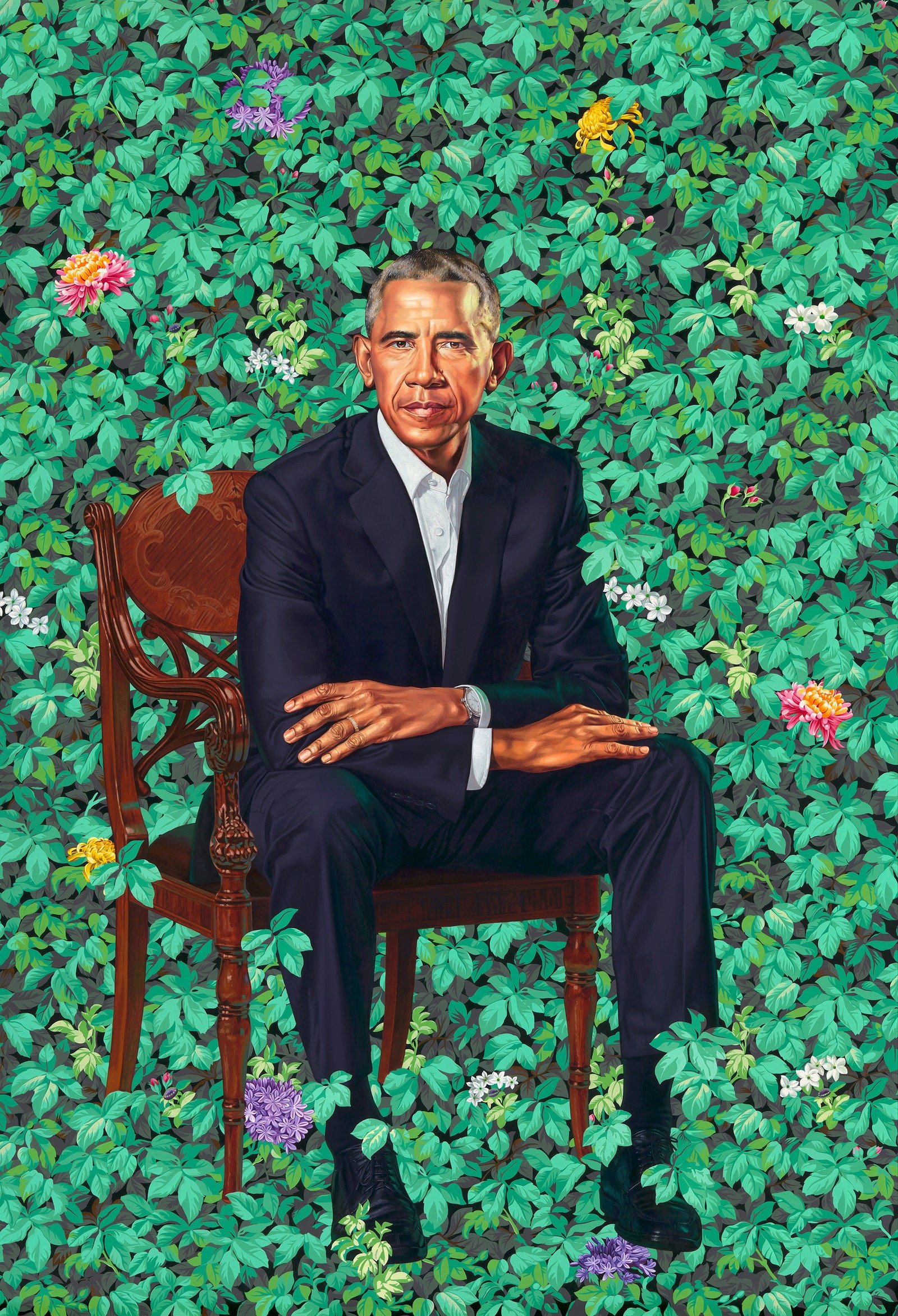
In recent history, few artworks have captured the public imagination quite like the Obama Portraits—the official portraits of 44th U.S. President Barack Hussein Obama and former First Lady Michelle Obama, which set off a media firestorm when they were unveiled in 2018.
The president’s portrait, painted by Kehinde Wiley, and the first lady’s, painted by Amy Sherald, marked a sharp—and refreshing—departure from the staid, traditional styles with which these official portraits had become synonymous.
And it wasn’t just the art world that was enthralled. When the portraits went on view at the National Portrait Gallery in Washington, D.C., attendance skyrocketed 300 percent. Visitors not infrequently broke down in tears before the paintings.
Since then, the public’s enthusiasm has not waned. Now, in an attempt to bring the images to a wider audience, both portraits have been sent on a cross-country museum tour that will last into spring 2022. With the first leg at the Art Institute of Chicago having just ended, the portraits will go on view at the Brooklyn Museum next week, from August 27–October 24. They will then travel to the Los Angeles County Museum of Art, the High Museum in Atlanta, and the MFA Houston.
To mark the tour, as well as President Obama’s recent 60th birthday, we decided to take a closer look at Kehinde Wiley’s foliage-filled portrait. Here are three details that might add to what you get from it.
1) Those Flowers Are More Than a Pretty Backdrop
Detail of Kehinde Wiley’s Barack Hussein Obama (2018). Courtesy of the National Portrait Gallery.
The most spectacular and notable thing about the portrait is how he hovers against a lush green backdrop of leaves and flowers. Where, we might ask ourselves, is the president meant to be, exactly? (The enveloping background inspired some Internet jokesters to compare the image to the famous meme of Homer Simpson getting swallowed up by a green hedge, or to Beyonce’s famed maternity portrait.)
The surreal space seems to suggest an almost miraculous status for this president. Obama’s left foot, as New Yorker writer Vinson Cunningham aptly pointed out, doesn’t press into the earth as one might imagine, but floats in an almost otherworldly way, like a Byzantine saint in a golden eternal realm.
Detail of the chair back in Kehinde Wiley’s portrait of Barack Obama.
Wiley painted his portrait working from a series of photographs he made of Obama and the resulting image has been celebrated (rightly) for its verisimilitude. But the greenery seems almost alive: As with many of his paintings, Wiley does not keep the flora neatly in the background but allows it to curl and twist with its own agency.
The flowers around him are more than decorative. In fact, they symbolically tell his life story: jasmine references Hawaii, where Obama was born; the African blue lilies represent Kenya, Obama’s father’s birthplace (Wiley’s own father is Nigerian); and chrysanthemums are the official flower of Chicago, the city where his political career began and where, of course, he met Michelle Obama.
2) The Chair Is an Art-Historical Enigma
Detail of the chair back in Kehinde Wiley’s portrait of Barack Obama.
While many observers focused on decoding Obama’s expression or the interest of the flower background, a select few had a very different focus: the chair. And the more you look at it, the more interesting the chair is, becoming a minor internet mystery at the time of the portrait’s original release.
It looks commanding and powerfully historical, as befitting the dignity of a presidential portrait. But the more critics tried to figure out what was going on with Obama’s chair, the more enigmas they noticed. Michele Hansen noted a few:
It features a modernized overlapping x-form scroll back, found in chairs of the early 19th century—but a flat back, which was not found in chairs of the time.
and:
another unexpected element is the simple part holding the seat, the apron. For a chair with such extensive ornamentation, the apron is almost aggressively unadorned. It looks like it may have a slight inlay or veneer, but is otherwise somewhat plain.
It was indefatigable art blogger Greg Allen who solved the mystery definitively. After considerable research trying to track down the real Obama chair or the historical reference that inspired it, he simply asked the National Portrait Gallery about it. The answer came back: there is no chair. “Wiley had created the chair. It is an imaginary synthesis of design details for which there is no explanation.”
3) The Portrait Responds to the Very First Presidential Portraits
Gilbert Stuart, Portrait of George Washington known as the “Lansdowne” portrait (1796). Collection of the National Portrait Gallery.
Despite everything else that is unusual about the Obama portrait, his seated pose is a convention.
It’s been used by many presidents (including Obama predecessor George W. Bush, in his official portrait), and it dates back to the third president, Thomas Jefferson, who used it as a bit of political branding: unlike Washington, who was shown standing, as an aristocrat and man of action, Jefferson was seated, meant to represent the president as down to earth, at work at his desk.
Certainly, this “relatable executive” theme continues in Wiley’s Obama, with his sport jacket and no tie.
There’s still a way you can think of Obama’s painting as in self-conscious relation to that very first Gilbert Stuart portrait of Washington. In the first presidential portrait, Washington, the first president but also a plantation owner, stands beside an empty chair. Two hundred and twenty years later, Obama, the first African American president to occupy the White House (a house built by slaves), has confidently taken a seat at the proverbial table.